Supercharge Your Blog Workflow with the Free Content Calendar Planner

The Free Content Calendar Planner from iNeedAI is a browser-based scheduling tool that lives locally—no sign-ups, no installs. It lets you visually map your posts, track statuses, and plan weeks or months ahead with ease. This article walks you through everything: what it is, how to use it, pros/cons, real-world workflows, and next-level strategies.
What Is the Content Calendar Planner?
Here’s the real deal in simple terms:
This is a no-frills content planner that runs in your browser. You sketch out future blog posts or content ideas on a visual calendar grid. It stores your plan in your browser (local storage), so you don't need an account—and it’s available the moment you open the page again. Think of it like mapping your editorial pipeline on Post-it notes, but tidier and digital.
The iNeedAI site says it helps you “visualize your publishing schedule, manage your workflow, and never miss a post.” It replaces fragmented notes and spreadsheets with a focused calendar.
Why It Matters—When This Tool Hits the Sweet Spot
Here’s why this deserves a place in your blogging toolkit:
-
Simplicity & fast setup
No account, no sign-in, no complexity. Ideal when you just want to get your ideas in order—yesterday. -
Zero friction = high usage
Tools fail if they’re too clunky. This one’s light and always available (as long as you don’t clear browser data). -
Visual clarity
The grid layout turns vague ideas into a schedule you can actually stick to. -
Privacy and speed
Your content stays local—nothing’s sent to servers. That makes it fast and safe. -
Great for solo creators or micro-teams
Keep your blog on track without juggling spreadsheets, notes, or logging into third-party platforms.
How to Use It—Step-by-Step
Step 1: Load the Planner here - Content Calendar Planner
Open the planner page — thanks to local storage, it’ll show your last-saved content grid automatically.
Step 2: Choose Your Time Frame
Decide if you're planning for the next month, quarter, or the full editorial calendar. Most users start with a simple weekly or monthly view.
Step 3: Add Your Content Ideas
Click into a time slot (day or week) and add your post title, status (planned, drafted, published), or tag (e.g., blog, social, video). No complex fields—this stays light.
Step 4: Color-Code or Annotate (Optional)
If the tool supports it (depending on version), use basic inline colors or labels to mark stages like "Idea," "Drafting," or "Live."
Step 5: Save Locally
Changes are automatically preserved in your browser. If the page is closed, reopening it restores your calendar—no extra steps.
Step 6: Update As You Go
Move or edit content blocks—shift a post date, update status, or mark it done. Pop-ups or inline changes handle that.
Step 7: Backup if Needed
Because this lives in your local browser, if you want to save or share it, take a screenshot or copy-paste to your own archive.

Advantages vs. Disadvantages
| Advantages | Disadvantages |
|---|---|
| Zero sign-in, minimal setup | Limited to browser/local storage — risk of data loss if cache is cleared |
| Clean, visual scheduling interface | Minimal fields — no custom columns like SEO tags or categories |
| Fast, lightweight, and private | No collaboration features for multi-person teams |
| Great for solo bloggers juggling posts | No notifications or integrations with publishing tools |
| Super simple—usable in seconds | Not ideal for advanced editorial workflows or detailed analytics |
Ideal for These Scenarios
-
Solo bloggers or creators mapping 4–8 posts per month.
-
Journalists balancing writing with ideas in progress.
-
Content hustlers who need sanity in their publishing schedule.
-
Anyone who’s tired of tangled spreadsheets.
What It Doesn’t Do (And Why That’s Okay)
-
No team workflows or approvals. This isn’t Trello or Asana.
-
No scheduling logic or publish automation.
-
No data export or cloud sync. Backup is manual (bookmark or screenshot).
-
No analytics or tracking. Still, it’s a lightweight hub, not a full suite.
If you need automation, scheduling, or team collaboration—later you can graduate to tools like Asana, Notion, or SproutSocial.
Next-Level Workflows: Make It Work Harder for You
-
Pair it with real scheduling. Use this planner to map content, then push final ideas into your CMS or Buffer.
-
Add reminders. Pair with calendar alerts or to-dos to stay accountable.
-
Color code manually. Use in-browser editing or markup to differentiate categories, formats, or platforms.
-
Weekly planning sessions. Open it each Monday to plan, then close the loop when posts go live.
Your Content, Without the Chaos
Consistency is the enemy of chaos. The free Content Calendar Planner from iNeedAI is the kind of tool you actually use—because it’s simple, immediate, and visual. No sign-ins. No learning curve. Just a clear layout to keep your content schedule sane.
If you ever need more power—collaboration, analytics, auto-publishing—you’ve got tools in your toolkit already. But for now, this is exactly what a content creator needs to turn scattered ideas into a real plan.
Want help mapping out your first month’s plan or integrating reminders in your workflow? Just say the word.







